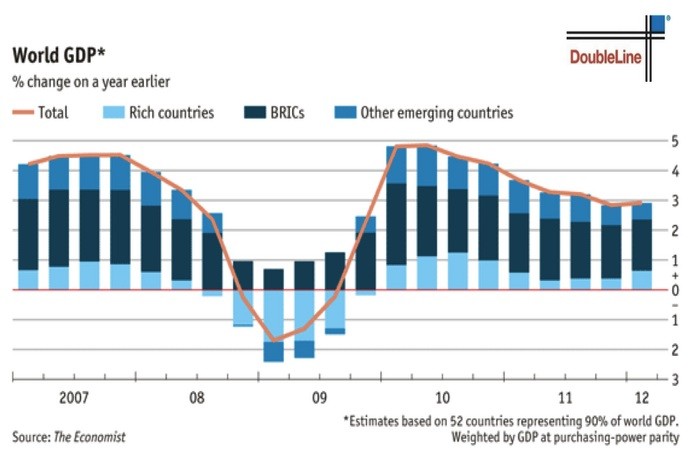The Best Way to Invest in Emerging Markets
Post on: 9 Июль, 2015 No Comment

Recent Posts:
The Best Way to Invest in Emerging Markets
There are three ways to get exposure to emerging markets, according to Barron’s Shuli Ren :
- Buy an emerging-market index.
- Buy a global materials index.
- Buy a basket of multinationals with heavy exposure to emerging markets.
While I certainly dont favor all equally, its worth taking a glimpse into each one of these possibilities. That way, you can find the right emerging-market exposure for you:
Emerging-Market Index
I’ve written about the first option recently, giving my recommendation on choosing the right emerging-market ETF .
The most direct route I have found is via the EGShares Emerging Market Consumer ETF (ECON ). ECONs holdings get about 90% of their revenues from selling within their home markets and other emerging markets, which is a stark contrast to most mainstream emerging-market ETFs.
For example, the iShares MSCI Emerging Markets ETF (EEM ) is comprised of companies that, while domiciled in the emerging world, get a large chunk of their revenues from exporting to the West. Think Samsung (SSNLF ) and Taiwan Semiconductor (TSM ). (Whether South Korea and Taiwan are “emerging markets” or “developed markets” is another debate for another day, but both countries are well represented in EEM.)
Commodities
What about Ren’s second option buying a global materials index?
I’m not the biggest fan of commodities as an asset class. There were numerous studies in the early-to-mid-2000s that showed a basket of commodities offering “equity-like” returns (such as this one ) and recommending commodities.

But things have changed over the past decade; correlations between commodities have increased. As commodity mutual funds and ETFs such as the PIMCO Commodity Real Return Fund (PCRDX ) and iShares S&P GSCI Commodity-Indexed Trust (GSG ) have become popular, commodities that once traded largely independently of each other now get lumped together and bought and sold as a group. Also, the financialization of commodities has caused their correlation to stocks to rise as well.
So, the touted diversification benefits are now mostly moot.
Furthermore, most investors have little understanding of how commodities investing works. Outside of a few ETFs that hold the physical commodity such as the SPDR Gold Trust (GLD ) most funds and ETFs use commodities futures. And the price of the underlying spot commodity is only one return driver. You also have to take into consideration the roll yield (or the return you from buying a futures contract and having its price converge to the spot price) and the return from the collateral (which is usually Treasury securities).
Well, the collateral returns which were significant in decades past have been close to zero in the age of quantitative easing. And due in no small part to excessive interest from new retail investors, many commodities futures have been trading in contango (i.e. have a negative roll yield). This means that futures investors actually lose money every month relative to the price of the underlying commodity.
Why does this matter? Gorton and Rouwenhorst wrote a paper that compared spot commodity returns to futures returns to see how commodities stack up as an asset class. Their “investable” futures portfolio had annual returns of 10.31% from 1959 to 2004. Yet the spot return was only 3.47% which was actually lower than the 4.15% in inflation during this period.
That means two-thirds of commodities returns were actually from the roll yield and the collateral … neither of which is a source of return in today’s market.
Multinationals
This brings us to multinationals. This is my preferred way to invest in emerging markets for most clients because, if done right, it is the best of all possible worlds. You can get emerging-market growth from companies with Western management that are subject to higher standards of governance and regulation.
I call the strategy “Emerging Markets Lite” or “Emerging Markets though the Back Door.” But whatever you want to call it, it’s a great way to invest the growth portion of your portfolio.
By and large, you’re going to get a better selection of Emerging Markets Lite stocks in Europe. Want a few examples? How about consumer products and food giants Unilever (UL ) and Nestle (NSRGY )? Both are stable performers with long histories of paying and raising their dividends. And both have monster presences in emerging markets. Unilever gets nearly 60% of its revenues from emerging markets, and while that has hurt the company this past quarter. it ensures that it has a bright future. Nestle gets more than 40% of its revenues from emerging markets.
Exposure to emerging markets is a double-edged sword. You benefit from the growth, but you also get whacked by the occasional currency crisis and by the occasional bout of political instability. Just consider it a cost of doing business.
The rise of the emerging-market consumer is a durable investment theme, and any macro shocks that cause Emerging Market Lite stocks to take a short-term tumble should be viewed as a buying opportunity.
Charles Lewis Sizemore, CFA, is the chief investment officer of the investment firm Sizemore Capital Management. As of this writing, he was long ECON, UL and NSRGY. Click here to receive his FREE 8-part investing series that will not only show you which sectors will soar but also which stocks will deliver the highest returns. The series starts November 5 and includes a FREE copy of his 2014 Macro Trend Profit Report.














